Sinkhole Repair – ACCL Waterproofing
Taking Care of a Sinking Foundation – ACCL Waterproofing
Although it may not appear so, the earth beneath you is shifting. Granted, it moves slowly enough that most of us don’t notice. While we may not notice, our homes undoubtedly do. Over time, soil movement can cause foundations to become unbalanced or sink, posing serious threats to the home’s structural integrity and livability. Why does this happen, and what can you do to address and resolve the issue? Let’s take a look!
THE SOIL:
The soil and rock composition where you reside, as well as how the earth was compacted, will determine whether or not your foundation is at risk of sinking. Sinking foundations are frequently related with expansive clay. Gravel, sand, and rock will not move or shift over time in the same manner that it will. This will be a concern in many parts of the GTA and Ottawa. There are a few options for you to consider, thankfully.
HOW TO MAKE THE SINKING STOP:
Your major goal is to put your house back in the right place. This will begin by determining the extent of any existing damage. The foundation will be thoroughly examined for any potential flaws. A pier and beam foundation repair or a slab foundation repair are two options. Which one you choose will be largely determined by the structure of your home. Typically, only one or two sides will require foundation work to stop the sinking. You can reverse the sinking foundation and no longer be at an incline by adding more material and helping to disperse the weight across a larger region.
NEEDING PROFESSIONAL GUIDANCE:
You’ll need the expertise and care of a professional foundation repair specialist if you have problems with your foundation sinking. In order to identify the best solution, a considerable deal of thought must be applied. The angle at which the house will sink, the foundation’s structural integrity, and the ideal position to offer additional support will all have to be thoroughly thought out ahead of time. The sooner you get an expert to examine your property, the lower your overall charges will be. Don’t leave it until it’s too late and serious damage to your home’s foundation has occurred.
Take advantage of the winter months to have us look at your basement and help you determine how best to address your basement leakage problems.

Get the job done RIGHT – Hire a professional Waterproofing company!
Want to know more about our waterproofing process? Give us a call at 416-759-2995
Rely On our ACCL Wet Basement Waterproofing Experts
Don’t Drown in a wet basement!
Rely On Wet Basement Waterproofing Experts
If you’ve noticed foundation cracks, spots, water, mold, and mildew, don’t ignore the signs or it could lead to more damage and possible health effects.
The basement waterproofing specialists at ACCL Waterproofing know how to repair your basement and foundation walls and keep moisture out of your basement. We would be pleased to develop a guaranteed solution to keep your basement dry!
ACCL Waterproofing: Installing Drainage Systems!
How to Waterproof a Basement and Install a Basement Drainage System – The ACCL Way!
Is your basement constantly wet? Do April showers bring May flowers and a flooded basement? Then waterproofing your basement and installing a drain system with a sump pump may be necessary. A wet basement not only prohibits you from using extra space in your home, but it can also turn your basement into a large petri dish ideal for the growth of harmful molds and fungi.
10 STEPS!
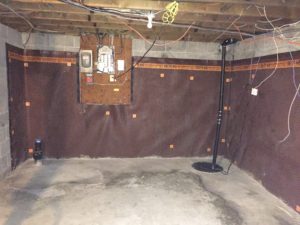
ACCL Waterproofing Step One:
It’s impossible to avoid the fact that breaking up concrete is a filthy task. While you’re working, switch off your furnace or central air conditioning and block all return air vents until you’re finished. Move everything out of the area and drape plastic from the ceiling to create an isolated workstation instead of covering it with plastic.
If you have an unfinished ceiling, make sure the plastic reaches all of the joist spaces. While using the jackhammer, place a fan in the window to help with the heavy dust. Also, put on a dust mask and earplugs. More measures to secure your house during remodeling efforts can be found here.
ACCL Waterproofing Step Two:
Electric jackhammers are preferred by professionals since pneumatic jackhammers generate significantly more dust. To begin, hammer a line 16 to 18 inches away from the wall. Begin by chipping in a straight line along the length of the wall, then return to break it down into manageable chunks. Return once the perimeter has been completed to break the concrete row into manageable fragments. If each component has enough freedom to pull away, it will break free more easily, so remove the sections as you go. Remember to make a larger area for your sump basin!
ACCL Waterproofing Step Three:
Dig down to the bottom of the footing but not below it once the concrete has been removed. You could wind up with cracks in your wall or worse if you jeopardize the soil beneath the footing. Use rubber feed buckets (usually used for farm animals) since they fit through narrow basement windows and are less likely to damage trim.
ACCL Waterproofing Step Four:
It’s ideal to put your basin in an unfinished basement area so you can get to the sump pump quickly. If you don’t intend to complete the basement, put the basin where you want the water to drain out of the house so you don’t have to install as much plastic tubing.
Dig the hole until the point where the top of the basin is flush with the finished concrete. Drill 1-inch holes in each block core and each mortar joint if your waterproofing basement walls are composed of concrete block. The water that collects in the cores and between the blocks will now be able to flow into the drain. Drill the holes as close as possible to the footings. It’s possible that the lower bricks are concrete-filled. You’ll have to demolish any existing walls and install foundation wrap in that instance. As you drill, place a shop vacuum hose close to the hole to reduce dust.
ACCL Waterproofing Step Five:
Place the basin in its final position before marking the locations of the holes where the pipes will meet the basin. Keep in mind that towards the basin, there will be a thin layer of rock (one layer thick) under the pipe. Use a reciprocating saw, jigsaw, or hole saw to make the holes. It is not necessary for the holes to be flawless. Don’t remove all of the dirt at once; some will be needed to fill in around the basin. Fill in around it once it’s permanently in place, tamping the ground with a 2×4 as you go.
ACCL Waterproofing Step Six:
Shovel in a bottom layer of 1-1/2-in. to 2-in. cleaned river rock before laying the pipe in the trench (a layer of smaller rock can become clogged with minerals and sediments). Every 10 feet, the pipe should slope at least 1/4 inch toward the basin. To get this pitch, rake the rock around. On top of the boulder, place your irrigation pipe. Because regular flexible drainpipe clogs easily, don’t use it. Schedule 10 perforated pipe with a 4-inch diameter is preferred.
Purchase a pipe with 1/2-inch rows. Only one side of the pipe has perforation holes, not all the way around. Install the pipe with the openings pointing down so that the minerals and sediment in the water can flow down and settle into the earth. The water that does rise up into the pipes from below will be reasonably clean as a result. Clean water will extend the life of the entire system by several years. Begin at the basin and push the male end of the pipe about 4 inches into the basin. At the corners, use PVC or ABS elbows. Cementing the parts together isn’t required.
ACCL Waterproofing Step Seven:
Drill a 1-inch hole in the core of each block and each mortar junction. After you’ve installed your pipe, you’ll need to connect it to the 1-inch irrigation hose that will bring the water from the blocks to the trench. Stick with irrigation hose because a softer hose, such as a garden hose, can be crushed flat by the new concrete. With a hacksaw or reciprocating saw, cut the hose. Make sure each hose portion is several inches past the footing.
ACCL Waterproofing Step Eight:
If your walls are made of poured concrete rather than block, you’ll need to build a foundation wrap to allow water to drain properly. The foundation wrap is constructed of durable plastic and has rows of dimples that allow water to pass through. With a utility knife, cut the sheets into strips. Allow the bottom half of the strips to run past the footing by bending them at 90 degrees. The length of the wrap against the wall is determined by your circumstances. Run the wrap up 4 in. above the top of the concrete on a poured wall, or up 4 in. past the holes you drilled in the block wall, at the very least. Try to tuck the wrap below the bottom plate if you’re working along stud walls.
ACCL Waterproofing Step Nine:
It’s time to cover it up after the hoses or foundation wrap are in place. Fill the trench with river rock up to the existing slab’s bottom, then cover the rock with a vapour barrier of at least a 6-mil thickness of plastic. Mix your concrete outside to reduce dust. For slabs and sidewalks, a bagged concrete mix will suffice. To “screed” the fresh concrete flush with the floor, slide a 3-foot strip of 2×4 along the floor and smooth it out with a hand float. After 20 minutes, use a finishing trowel to level it out. Fill the gap beneath any existing walls entirely with the float.
ACCL Waterproofing Step Ten:
Submersible pumps with a vertical float switch are more reliable than pedestal or float switch pumps, according to professionals. On the pump, install a 6- to 8-in. segment of pipe, followed by a check valve. Ensure that the check valve does not obstruct the pump switch. Attach another segment of pipe above the check valve, long enough to reach above the top of the basin. In the portion of pipe just below the check valve, drill a 1/4-in. to 3/8-in. vapour lock release hole.
This permits the pump to come up to speed before attempting to force open the check valve, which may be under pressure from many gallons of water. While the pump is running, angle the hole so that water pours down. It’s preferable if your pump has its own output. Other appliances connected to the same circuit may trip a breaker if extension cords go unplugged. The pipe exiting the basement must be placed in a sloped area away from the house.
Consider burying the waste pipe in the trench and having it come back up where you want it if it involves running a pipe back across the basement. If you reside in a cold environment and your pipe will discharge above ground, run it no more than 8 inches past the siding. In the winter, this will keep it from freezing. Basement drain water, with a few exceptions, cannot be put into city sewer systems.
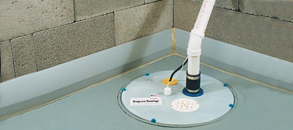
Most systems can be emptied into storm sewers if they are above ground level. Inquire with your building official about the rules in your region.
Take advantage of the warmer summer months to have us look at your basement and help you determine how best to address your basement leakage problems.

Get the job done RIGHT – Hire a professional Waterproofing company!
Want to know more about our waterproofing process? Give us a call at 416-759-2995
Rely On our ACCL Wet Basement Waterproofing Experts
Don’t Drown in a wet basement!
Rely On Wet Basement Waterproofing Experts
If you’ve noticed foundation cracks, spots, water, mold, and mildew, don’t ignore the signs or it could lead to more damage and possible health effects.
The basement waterproofing specialists at ACCL Waterproofing know how to repair your basement and foundation walls and keep moisture out of your basement. We would be pleased to develop a guaranteed solution to keep your basement dry!
Waterproofing Additions: ACCL Waterproofing
What Causes Structural Foundation Damage in Home Additions?
You and your family adored your home, enjoyed the neighbourhood and despised the prospect of relocating. However, as your family grew, the house began to seem claustrophobic, so you decided to stay put and added an extension to the house, which included a couple of extra bedrooms and a family room.
Years later, your family is still happy in their home, but you’ve started to notice some strange things: The drywall in those newer bedrooms upstairs is cracked, the door from the family room to the back yard is difficult to open and close, and the floors in the addition have a significant slant toward an outer corner.
If your home’s original structure had been in place for several decades, any foundation sinking or movement would have occurred long before your addition was erected. Moreover, whether or not there was a basement or crawl space, the original foundation was most likely designed with spread footings and other construction techniques that helped maintain its stability.
New Addition: Pros more than Cons
The new addition expands the roof of the house, increasing the amount of water flowing from downspouts, which are normally located at the corners of the new addition. All of this water saturates the soil, which dries out and shrinks during droughts like the current one, forcing the addition’s outside corners to sink.
Your addition is shifting while the rest of the house remains stationary due to these and other building considerations. This explains the tilted or uneven floors, broken walls, and jammed doors and windows. When you notice these things, you know your foundation has been damaged.
Also, if it was a do-it-yourself or handyman-built addition, the foundation walls may not have been dug deep enough to withstand frost heave in cold conditions. Whatever the source, you’re dealing with a situation that need the assistance of a structural foundation repair contractor. Choose one that will use the most up-to-date techniques to raise and stabilise the foundation beneath your addition so that it is as functional as possible.
ACCL Waterproofing’s structural foundation damage professionals have years of experience rebuilding all types of foundations and maintaining their stability. We’re ready to return your home to its original level, swiftly and affordably, regardless of the sort of underpinning your foundation requires. Why not get a free quote?
Take advantage of the warmer summer months to have us look at your basement and help you determine how best to address your basement leakage problems.

Get the job done RIGHT – Hire a professional Waterproofing company!
Want to know more about our waterproofing process? Give us a call at 416-759-2995
Rely On our ACCL Wet Basement Waterproofing Experts
Don’t Drown in a wet basement!
Rely On Wet Basement Waterproofing Experts
If you’ve noticed foundation cracks, spots, water, mold, and mildew, don’t ignore the signs or it could lead to more damage and possible health effects.
The basement waterproofing specialists at ACCL Waterproofing know how to repair your basement and foundation walls and keep moisture out of your basement. We would be pleased to develop a guaranteed solution to keep your basement dry!
Underpinning – ACCL Waterproofing
ACCL Waterproofing: Underpinning Basements
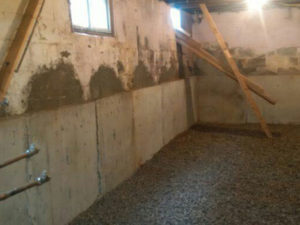
The basement is the first place you should examine if you want to make your home more habitable. But what if your basement is unfinished or has to be lowered to make your family more comfortable? This is where the procedure of basement lowering, also known as underpinning, comes in handy for increasing the amount of living space in your basement.
Waterproofing firms dig down to your house’s footing and increase the height of your ceilings while strengthening the base of your foundation walls in this form of basement foundation repair.
The basement was never meant to be a living space in many older homes, with low ceilings and exposed ducting limiting the amount of headroom. The number of materials necessary for basement lowering makes it no easy task. However, it will significantly raise the value of your home while also increasing your living space.
Why should you underpin your basement??
- Basement lowering, also known as underpinning, includes digging several feet down into the basement floor. This will increase the value of your property by ensuring that the basement is conveniently accessible and usable. Furthermore, underpinning improves the structural integrity of your property, thereby improving its appearance. These basements are typically 6 feet high, thus reducing the basement by 2 feet for a total of 8 feet for headroom is the goal.
The terminology used when discussing basement lowering-
- Benching: The benching system is utilized to add to the amount of living space available. The benching system is similar to the underlying system in that it allows you to achieve the same overall height gain while using less space. If the area is finished according to the benching system, it can be used for a variety of purposes. It is a system that is less expensive and takes half the time as underpinning.
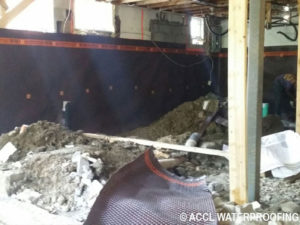
- Underpinning: The primary purpose of the system is to add additional living space. You will be able to raise the total height and square footage of your basement with this technique. The majority of homeowners select this choice since it allows them to either rent out their basement as a rental property, generating cash, or obtain a fully finished basement, increasing their living space.
Lowering your basement is a great method to give your home a complete facelift. However, it is a major project that will have an impact on the general construction of your home, and you must complete it correctly. Make sure the company you hire has underpinning and liability insurance before you take any chances or cut corners.
Take advantage of the warmer summer months to have us look at your basement and help you determine how best to address your basement leakage problems.

Get the job done RIGHT – Hire a professional Waterproofing company!
Want to know more about our waterproofing process? Give us a call at 416-759-2995
Rely On our ACCL Wet Basement Waterproofing Experts
Don’t Drown in a wet basement!
Rely On Wet Basement Waterproofing Experts
If you’ve noticed foundation cracks, spots, water, mold, and mildew, don’t ignore the signs or it could lead to more damage and possible health effects.
The basement waterproofing specialists at ACCL Waterproofing know how to repair your basement and foundation walls and keep moisture out of your basement. We would be pleased to develop a guaranteed solution to keep your basement dry!
How to Safely Remove Mold: ACCL Waterproofing
How to Safely Remove Mold: ACCL Waterproofing
Mold and mildew are quite widespread in both homes and businesses. Both of these annoyances thrive in damp, wet, and humid environments, such as the restroom. Mold and mould removal can be dangerous to your health, especially if you have a large infestation. Mold can aggravate allergies, trigger asthma attacks in asthmatics, and irritate nasal and respiratory passages, causing sneezing, coughing, and watery eyes.

Mould Removal and Treatment
The majority of homeowners are capable of dealing with minor infestations in their homes. If you have asthma or allergies that are aggravated by mould, however, it is best to leave mould removal to a professional, regardless of the magnitude of the infestation. Small infestations can be treated using home cleansers that are designed to kill mould and mildew.
Mildew is a type of mould that, if left untreated, will continue to develop and expand. Use protective equipment such as rubber gloves, a face mask, and goggles while cleaning areas such as between the grout lines in bathroom wall tiles to prevent mould spores from getting on your body, into your nasal and respiratory passages, and into your eyes. To release the mould, start by spraying it with an appropriate cleanser and letting it sit for a few minutes.
- Scrub with a sponge, toothbrush, or other soft bristles device to thoroughly get into the cracks and crevices.
- Work carefully and thoroughly, focusing on one area at a time. In a pail of lukewarm water, rinse your sponge or toothbrush.
- Continue to clean the area until there are no more symptoms of mould or mildew.
- Rinse showers, tubs, and sinks thoroughly with clean water.
- Finally, re-spray the areas with cleanser and let it dry naturally.
- To prevent mould and mildew from returning in the bathroom, it’s a good idea to treat the areas you just cleansed every time you shower or bathe.
You should also make it a habit to clean these places at least once a week. You can still use an appropriate household cleaner in other sections of the house with smaller infestations, such as where mould and mildew are growing on walls, ceilings, baseboards, or flooring.
Just remember to treat a small area first to check for discoloration, or be prepared to spend money on mould repairs after the mould has been eradicated, such as repainting the walls or replacing portions of drywall. After you’ve treated and removed the mould, place sponges and toothbrushes in a zip-lock plastic bag and throw them away. You should not preserve these goods since mould spores have already grown in them and can continue to proliferate.
Mold in Basements
Your basement is another part of your home that can get infested with mould. Basements are notorious for being damp. Using a dehumidifier to remove excess moisture from the air is one approach to prevent mould in damp basements. Basement waterproofing treatments to seal walls are the simplest approach to keep dampness out and prevent mould.
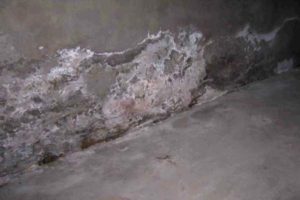
Changes in temperature and dampness concerns under the home’s foundation or along the external support walls can cause concrete to let water seep through and seem moist. Basements and residences that have recently been flooded can also develop black mould as a result of water damage. Again, waterproofing your basement will aid in the resolution and prevention of these and other difficulties.
When Should You Hire a Professional Mold Removal Company?
For serious mould infestations in the house, expert mould repair and removal services are recommended. When compared to minor infestations, the health risks associated with severe infestations are significantly higher.
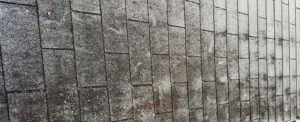
Even for mild infestations, you should utilize professional removal services if you are asthmatic or have serious allergies, as previously said. It’s critical to get rid of the mould as early as possible while also identifying and resolving the source. Your mould remediation expert knows how mould grows and develops, as well as how to identify the source of dampness and moisture that feeds the infestation.
Take advantage of the warmer summer months to have us look at your basement and help you determine how best to address your basement leakage problems.

Get the job done RIGHT – Hire a professional Waterproofing company!
Want to know more about our waterproofing process? Give us a call at 416-759-2995
Rely On our ACCL Wet Basement Waterproofing Experts
Don’t Drown in a wet basement!
Rely On Wet Basement Waterproofing Experts
If you’ve noticed foundation cracks, spots, water, mold, and mildew, don’t ignore the signs or it could lead to more damage and possible health effects.
The basement waterproofing specialists at ACCL Waterproofing know how to repair your basement and foundation walls and keep moisture out of your basement. We would be pleased to develop a guaranteed solution to keep your basement dry!
How to Waterproof Concrete? – ACCL Waterproofing
HOW TO WATERPROOF CONCRETE?
A foundation issue is probably the worst thing that can happen to a residential building, apart from it burning down. The foundation is basically the foundation of the house; it is what holds the structure in place by moving dead and live loads into the earth.
The vast majority of foundation issues are caused by water. Wet soil beneath a foundation will expand and weaken.
That’s not even the most important reason to keep your foundation dry. There’s also the issue of cold, wet basements and crawl spaces, which can cultivate mold and make below-ground interior spaces uncomfortable in general. The issue is that ordinary concrete is not watertight.
Although uncracked concrete can usually keep liquid water out, water vapor will easily pass through. A good structure needs water to be drained away from concrete foundations and prevented from flowing through the concrete.

Depending on the geographic area, terrain, topography, soil/water table conditions, and foundation depth, achieving our task of draining some water and maintaining a dry interior space below grade can be relatively easy or reasonably involved. Any system built to keep water out has three components. From the bottom up, these are:
- Drains that direct water away from the foundation’s foundation.
- Water is routed down to the drains through a wall treatment that prevents moisture from passing through the wall.
- Treatment of the ground surface adjacent to the building to direct surface water away
Know that since this will be all underground when the construction is finished, doing it right the first time is important, as going back to repair it will be costly. A leaking foundation in a home can ruin the finishes and furnishings, as well as the structure itself. Water in a commercial building can destroy expensive machinery and cause major disruptions in operations. All of this adds up to money being lost, time is wasted, consumers are angry, and litigation is often necessary.
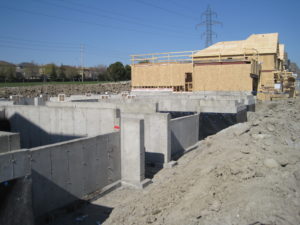
HOW TO MAKE A FOUNDATION WATERPROOF
Concrete Waterproofing Planning
Allow plenty of time to float for waterproofing. Recognize that good waterproofers will be in high demand during the busy season if you’re using a waterproofing subcontractor. Waterproofing work can also be delayed by rain.
Waterproofing should be planned ahead of time. The finish grade line on the foundation walls would most likely be seen on the design elevations, but these lines should be checked with the architect if possible. Above grade, you don’t want black, gooey waterproofing to show. Keep an eye out for changes in grade level. If the architect has chosen to tackle the transition with a retaining wall, a line of waterproofing descending at a diagonal from one level to another will not fit.
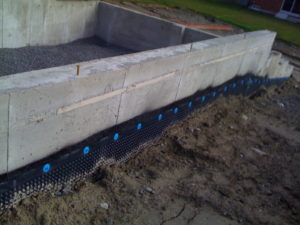
Take advantage of the warmer summer months to have us look at your basement and help you determine how best to address your basement leakage problems.

Get the job done RIGHT – Hire a professional Waterproofing company!
Want to know more about our waterproofing process? Give us a call at 416-759-2995
Rely On our ACCL Wet Basement Waterproofing Experts
Don’t Drown in a wet basement!
Rely On Wet Basement Waterproofing Experts in Toronto
If you’ve noticed foundation cracks, spots, water, mold, and mildew, don’t ignore the signs or it could lead to more damage and possible health effects.
The basement waterproofing specialists at ACCL Waterproofing know how to repair your basement and foundation walls and keep moisture out of your basement. We would be pleased to develop a guaranteed solution to keep your basement dry!
